Last Updated on January 8, 2024 by Greg Gillson
One reason people give up on feeding birds is that they don’t quickly attract birds to their new feeders.
You might say to yourself, “If only I had the right bird food, then birds would come.”
Or, perhaps, “If only I had the right bird feeder, then birds would come.”
But more is involved.
As with all living things, birds need food, water, shelter. Above all, they must feel safe in order to come and be quickly attracted to your bird feeder. And certain times of year are better than others for attracting birds to feeders.
How do you get birds to come to a new feeder? Here is one formula to quickly attract birds to your feeder:
Put your feeders up in October. Make sure you have fresh bird seed. Fill a tube feeder with black oil sunflower seed. Put a hopper feeder with white proso millet near a tree or large bush for cover and safety. Place some mixed seeds on a low platform feeder so birds can see it easily.
But even if it’s not autumn, and there are no trees growing in your yard, you can still get birds to come to your feeder in a short period of time.
How to quickly attract birds to your feeder
You can get birds to come to your feeder quickly by setting up your bird feeding station properly.
[See my article on setting up your first bird feeder for my recommendations to get started.]
This includes such items as food and feeders. But there is more.
You may not have thought about it before, but birds need to feel safe if they are to use a feeder. The way you set up your feeders and position them in your yard can make a big difference.
You can put some landscaping bushes and trees in your own yard.
But you can’t control the landscaping (or lack of it) in your neighborhood. Such surrounding habitat (including neighbors with feeders) have much to do with how soon and how many birds come to your feeders.
I have several recommendations to speed up the time it takes for birds to find and use your feeders.
Let’s talk about these recommendations individually.
Quickly attract birds to your bird feeder by offering several kinds of food
It often works best to provide several different kinds of bird seed and food separately, each in their own feeder. Why?
Most birds prefer one type of bird food more than other. So when they come to a feeder with mixed bird seed, they often throw out the seeds they don’t like onto the ground. Here they can spoil or just make a mess.
That feeder with all the different kinds of food? Perhaps several species eat from it. Some can be quite aggressive and scare off shier birds.
Place different seeds in different feeders around your yard so that milder birds can eat their favorite seed away from other more boisterous birds that eat different seeds.
Most birds like black oil sunflower seeds. Red finches, chickadees, and goldfinches especially like this seed.
Smaller sparrows and juncos like white proso millet.
Peanuts are a favorite of jays, nuthatches, and woodpeckers.
[See my article on what bird foods attract what birds.]
Mixed seed often contains inexpensive “filler” seeds to keep the price low. But many of these seeds are not well-liked by most birds. Stick to the three foods above to attract birds more quickly. Avoid any mixed seed with red milo, wheat, or cracked corn listed as the first 3 ingredients.
How fresh is your bird seed? Seed left over from last season may go bad. Start a new bird feeder or a new bird feeding season with fresh bird seed.
Get birds to come to your new feeder by setting up different kinds of feeders placed around your yard
Finches and chickadees like to feed in the tree tops. They pull ripe seeds from cones or seed heads. Thus, they like to eat from tube feeders, perhaps hanging on a tall bird feeder pole or shepherd’s hook. So put your black oil sunflower seeds in a tube feeder.
Larger birds, such as jays, starlings, and blackbirds (even house sparrows) have a difficult time feeding from tube feeders. Thus, these feeders protect your more expensive sunflower seeds from the voracious appetites of larger and flocking birds.
Sparrows, towhees, and juncos like to feed on the ground. They like to hop and kick over leaf litter to find fallen seeds. Provide a low hopper feeder filled with white proso millet for these birds. Or offer a mixed bird seed that contains plenty of millet and black oil sunflower seeds.
[See my article on how high bird feeders should be placed?]
Larger birds, such as cardinals, jays, doves, and others prefer the more open platform feeders. Here you can feed mixed bird seeds with peanuts or other tree nuts, and cracked corn, and striped sunflower seeds.
After your feeders are established, you can add suet feeders and thistle feeders. But these usually take longer to attract birds than the feeders and foods above.
[See my article on different kinds of bird feeders and what birds prefer them.]
If it isn’t raining, you may initially place scattered bird seed out on bare patches of ground, patio, or in saucers on top of fence posts or around the yard where birds can see them. Birds find food by sight. They see the food. Then they are attracted to other birds squawking and fighting over food! Once birds find your feeders you don’t need to scatter bird seed on the ground anymore.
[See my article: Can you just throw bird seed out on the ground?]
Quickly get birds to use a new feeder by setting it up at the right time of year
When is the best time to set up a bird feeder? Mid to late autumn is the best time to set up a bird feeder. October is good, November farther south. Why?
Birds that breed in the north migrate south in fall. They look for a place to spend the winter. Such a place must have protective vegetation, water, and food. By December birds have stopped moving around. They have selected their winter territory and will stay there until spring.
So it is best to have your feeders set up by early winter, at least.
Birds migrating back north again in the spring will find bird feeders to stop at along the way.
Getting birds to use a new feeder in the summer and early autumn is harder. There is usually an abundance of natural foods, insects, fruits, and seeds. Adult birds that eat seeds often feed insects to their young (finches and goldfinches are the exception in feeding their nestlings seeds).
Not all birds migrate. So you may attract the year-round resident house finches and chickadees with black oil sunflower seeds even in summer.
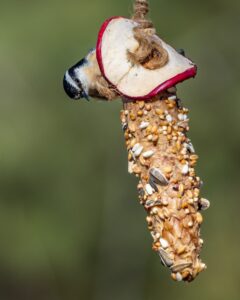
Get birds to use a new feeder by setting up staging perches
Have you observed that most birds do not fly directly to a bird feeder?
Birds usually approach more cautiously. They fly to a safe perch near and often above the feeder to check it out first.
The feeder is so exposed! The birds want to make sure there aren’t any hawks or cats or other dangers there at the feeder before they visit to eat.
These way stops to the feeder are called staging perches.
Finches and jays may use fences and electrical wires as staging perches. Other birds may prefer lower perches where they can approach unseen. Thus, a dense low tree or bush often works well as a staging perch.
If your yard is bare, you may consider planting willows. They grow very quickly from free cuttings. In 3 years it can be quite dense.
Quickly attract birds to your bird feeders by adding water
Birds need water to drink and bathe year-round, not just summer. In fact, birds may get dehydrated in winter when all water is frozen!
Nothing attracts birds like the sound of dripping water! If you can make or buy a fountain, bubbler or dripper for your bird bath, you will soon have birds!
And even birds that don’t come to feeders will come to bird baths. Remember, birds attract birds. Get any birds comfortable with coming into your yard, and they’ll soon attract others.
Attract birds to your feeders by placing feeders correctly within your landscaping
Birds want a safe place to flee from the feeders when they perceive danger. Thus, feeders are best placed within 10-15 feet of such refuge.
You may place a feeder below such a tree or even hanging from it, if sturdy.
Many birds do like to feed low or on the ground. However, don’t place a low feeder too near a low dense bush where a cat could hide and spring out.
But other birds like to feed higher and more in the open.
And, you have to balance all this with being able to see the bird feeder from your window!
[See my article that answers questions about setting up bird feeders and bird feeding.]
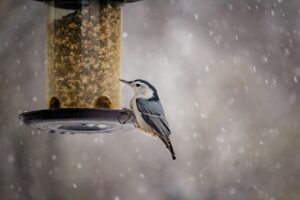
How long does it take to attract birds to a new feeder?
It takes about 2-14 days to attract the first birds to a new feeder.
It can take longer in summer, as we discussed above.
And, if you live in an urban or new residential neighborhood lacking large trees and mature landscaping, it can take months to attract larger numbers of birds to your bird feeder.
But now you have the tools to quickly attract whatever birds may be present.
Wrapping Up
There are many benefits to feeding birds, for both the birds themselves and for us humans who enjoy their presence. Here are some of the key advantages:
For the birds:
- Supplemental food: Bird feeders provide an additional source of nourishment, especially during challenging times like harsh winters or droughts when natural food sources might be scarce. This can help birds maintain their energy levels, improve their overall health, and increase their chances of survival.
- Reduced stress: Consistent access to food can reduce stress levels in birds, as they spend less time and energy searching for food. This can be particularly beneficial during breeding season when they need to focus on raising their young.
- Habitat improvement: By attracting birds to your yard, you’re essentially creating a miniature wildlife habitat. This can attract other beneficial creatures like pollinators and insect predators, creating a more balanced ecosystem.
- Supports migration: During long migrations, birds often rely on feeding stations along their route for vital energy boosts. Providing food can help them complete their journeys successfully.
For humans:
- Joy and connection to nature: Watching birds flitting around feeders and interacting with each other can bring joy and a sense of connection to nature. It can be a delightful and relaxing way to spend time outdoors.
- Education and learning: Bird feeding can be a great way to learn about different bird species, their behaviors, and their ecological roles. This can be a rewarding experience for adults and children alike.
- Pest control: Some birds, like insectivores, can help to control garden pests by munching on insects that might otherwise damage your plants.
- Stress reduction: Studies have shown that spending time observing birds can be calming and can help to reduce stress levels. This can be a welcome boost, especially in today’s fast-paced world.
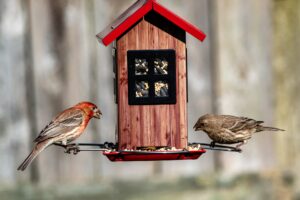
Frequently Asked Questions
Is it legal to feed birds in USA?
In most cases, yes, it is legal to feed birds in the USA. There is no federal law against it, and the U.S. Fish and Wildlife Service even acknowledges the potential benefits of backyard bird feeding for both the birds and humans.
However, there are a few exceptions to keep in mind:
- Local ordinances: Some cities or municipalities may have ordinances that prohibit bird feeding, either in general or in specific areas like parks or public spaces. It’s always a good idea to check with your local authorities before putting up a feeder.
- Homeowner association (HOA) rules: If you live in a neighborhood with an HOA, there may be rules that restrict or prohibit bird feeding. Be sure to check your HOA’s covenants before putting up a feeder.
- Feeding on public land: In some cases, it may be illegal to feed birds on public land, such as in national parks or wildlife refuges. Again, it’s best to check with the specific land manager for their rules.
Even if it’s legal to feed birds in your area, there are a few things you can do to be a responsible bird feeder:
- Use clean feeders and keep them clean: Regularly clean your feeders with hot soapy water and a disinfectant to prevent the spread of diseases among the birds.
- Use the right food: Choose birdseed that is appropriate for the birds you want to attract, and avoid using seed mixes that contain unhealthy ingredients like millet.
- Place your feeders strategically: Place your feeders in a sheltered location away from predators, and consider using different feeder types to attract a variety of birds.
- Be mindful of your neighbors: If your feeders are attracting birds that are causing problems for your neighbors, such as by being too noisy or messy, you may need to take steps to address the issue.
Do birds like feeders high or low?
Here are some tips for attracting birds with feeders at different heights:
- Variety is key: Offer different feeder types and heights to attract a wider range of birds.
- Consider safety: Hang feeders away from windows and other potential hazards.
- Provide shelter: Place feeders near trees or shrubs to offer protection from predators.
- Keep it clean: Regularly clean your feeders to prevent the spread of diseases.
What is the best time of day to fill bird feeders?
There’s no single “best” time of day for bird feeders, as it depends on several factors, including:
Bird species: Different bird species have different foraging habits and activity times. Some, like chickadees and finches, are active throughout the day, while others, like owls and nightjars, are primarily nocturnal.
Season: In colder months, birds need to eat more frequently to maintain their body temperature. So, early morning (before sunrise) and late afternoon (before sunset) can be excellent times to offer food, as they’re actively seeking energy. In warmer months, birds may feed more during cooler parts of the day, like dusk and dawn, to avoid foraging in the scorching heat.
Food type: Certain foods attract birds at specific times. For example, hummingbirds primarily feed during daylight hours, so keeping their feeders full throughout the day makes sense. Suet, on the other hand, becomes more appealing to birds like woodpeckers as the temperature drops, making evening a good time to stock it up.
Location: If your feeders are in sunny areas, consider providing food slightly earlier in the morning before it gets too hot. Conversely, if they’re in shade, offering food later in the morning or afternoon might be more appealing.
Competition: If you have multiple feeders competing for attention, strategically filling them at different times can encourage visits throughout the day and prevent dominance by larger or territorial birds.
Here are some general tips for maximizing bird feeder activity:
- Fill feeders consistently: Maintain a regular schedule for filling your feeders, ensuring birds know when to expect food.
- Clean feeders regularly: Keeping feeders clean and hygienic avoids the spread of diseases and makes the food more attractive.
- Provide water: Birds need water year-round, so consider adding a birdbath near your feeders, especially during drier seasons.
- Offer variety: Experiment with different feeder types and food blends to cater to a wider range of bird species.
- Observe and adapt: Pay attention to when you see the most bird activity and adjust your feeding schedule and food offerings accordingly.



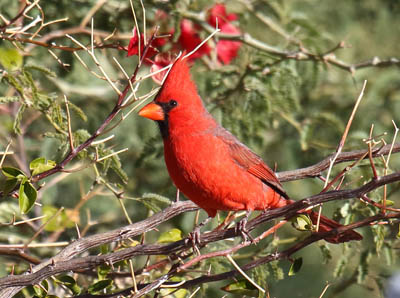
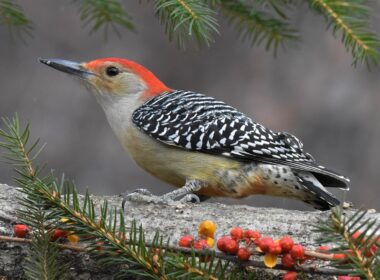
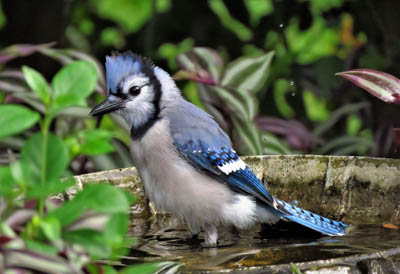
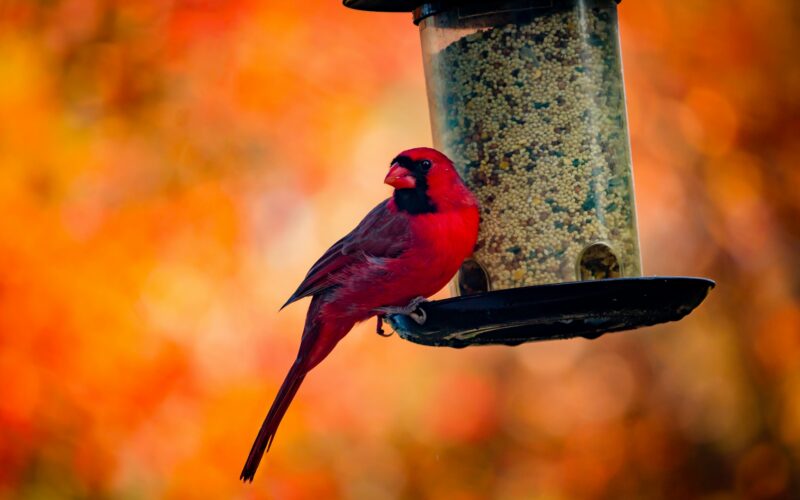

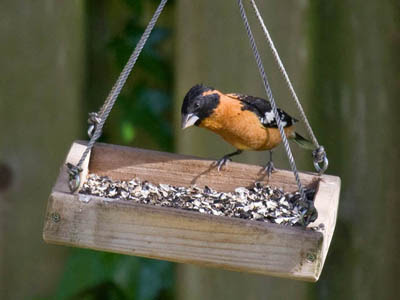

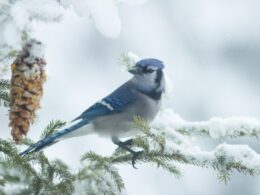
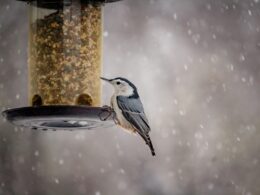
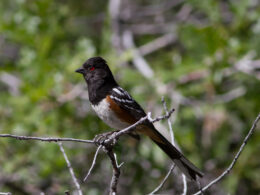
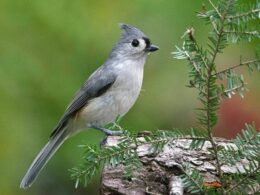
This is great! I have 2 bird baths in a new section that I am working on building for bees and pollenators. It is fenced off so dogs can't get in there. I have one hanging bird feeder but you make me think I should have ground feeder also. I have 4 new lilac bushes that will grow to protect them like the one I have now. Looking forward to seeing more birds
This sounds wonderful and exciting!
Thank u souch for the info, and im especially glad that u mentioned to be careful to not put your feeders to close to the ground because cats will spring out and nab them! Alot of people do not realize this.
Thank you for your nice words!
Very, very interesting. I enjoyed the information. Hope to read more good information soon. Sarah
Thanks for visiting, Sarah!
Thanks Greg for the post! This was very informative!
You are welcome, Trey. Thanks for visiting!
Thank you, as I live in Queensland Australia I had to think the opposite for seasons & months but you have given good ideas, we are thinking of placing some fruit like apple with seed in feeder & hoping birds will start appearing within next couple of weeks, cheers
Australian birds are all so different!